What are Tapas: Explore the delicious small bites dishes of Spain to be shared and try all the many regional specialties dishes
The first time I had tapas was really in between meals before the dinner time frame. I was starving but didn’t want to wait for the official dinner schedule that starts around 9 o’clock around the country. Tapas are typically small bites that can be served at lunch or before dinner typically with drinks and part of the lifestyle and socializing culture of the country. I like the fact that you can go to many different tapa bars and do a foodie type tour along with trying out some local brews, wines and specialty drinks from each region that you visit.
A brief history on Tapas
Before we get started with the popular tapas that you will typically find on the menu at various bars around the country, I will share a little bit about the origins of Tapas and Tapa culture in Spain.
Tapas have a long and evolving history in Spain, rooted in practicality and shaped by regional customs. The origin is often traced back to the practice of covering (or “tapar”) drinks with a slice of bread or meat to keep flies out, which eventually evolved into serving small portions of food with drinks. Some stories tie the tradition to King Alfonso X, who supposedly required taverns to serve food with wine to prevent drunkenness. Over time, tapas became a social ritual, especially in southern Spain, where hopping from bar to bar sampling different dishes became part of daily life. What started as a simple bar snack has grown into a key part of Spanish culture and culinary identity.
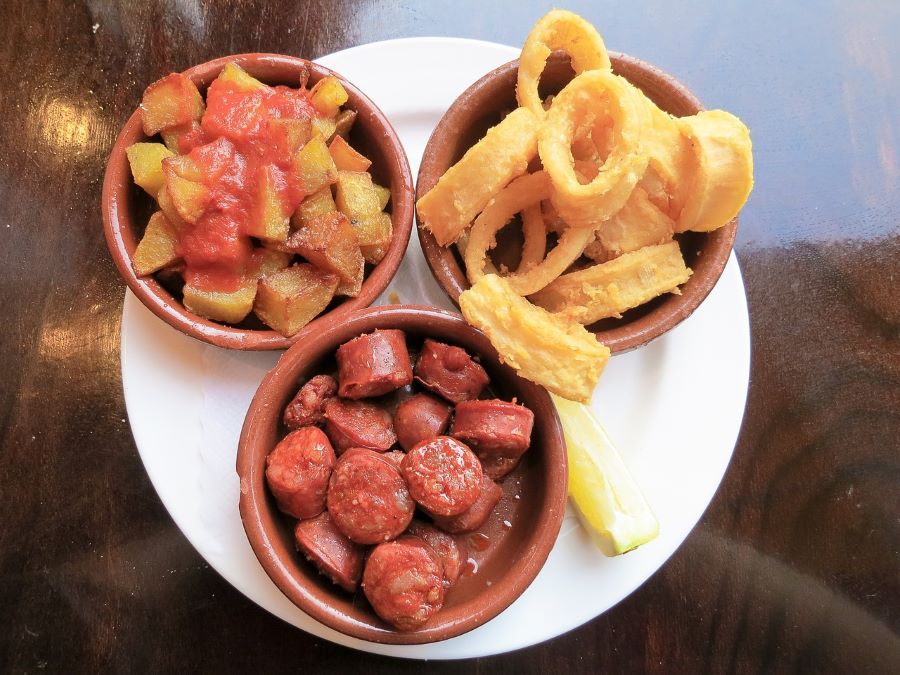
What Is Tapas Food?
Tapas are small portions of food served either hot or cold, traditionally enjoyed with drinks and shared among friends or family. Rather than a specific type of dish, tapas refers to the style of eating—casual, social, and meant for sampling a variety of flavors. You’ll find everything from olives, cheeses, and cured meats to grilled seafood, braised meats, and regional specialties like patatas bravas or croquetas. Tapas can be as simple as a slice of tortilla española or as elaborate as slow-cooked oxtail. It’s a flexible way of dining that emphasizes variety, conversation, and a relaxed pace.
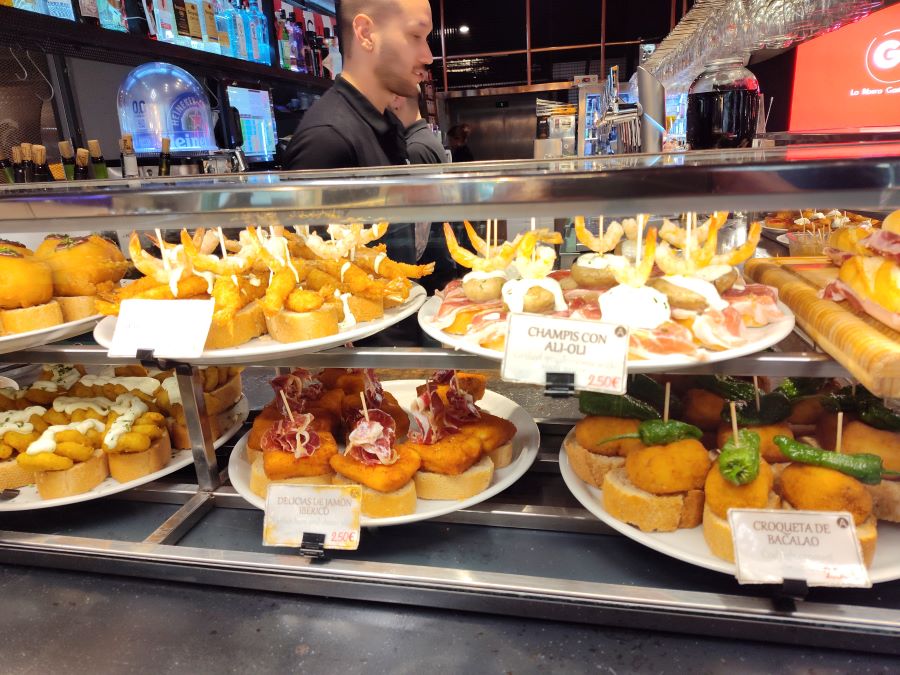
Pintxos vs Tapas
While both pintxos and tapas are small bites meant for casual eating, the main difference lies in their origin, presentation, and how they’re served. Tapas come from all over Spain and are often served as small plates meant to be shared, sometimes for free with drinks in certain regions. Pintxos (or pinchos), on the other hand, are typical of northern Spain, especially the Basque Country. They’re usually served on a slice of bread with a topping, held together by a toothpick—which is actually where the name comes from. In many pintxos bars, you collect your own selections and pay based on the number of toothpicks left on your plate. Tapas are more varied in form and can range from simple to complex, while pintxos lean toward creative, bite-sized combinations often displayed on the bar counter.
I found Pintxos dishes to be more elaborate and creative slice bread with interesting combinations of unique ingredients sourced locally that made each dish stand out above the other bars selling pintxos in the area.
Popular Traditional Tapas to try
Here are some of the typical traditional tapas you will find around the country and my favorite dishes to accompany a local drink specialty from that region.
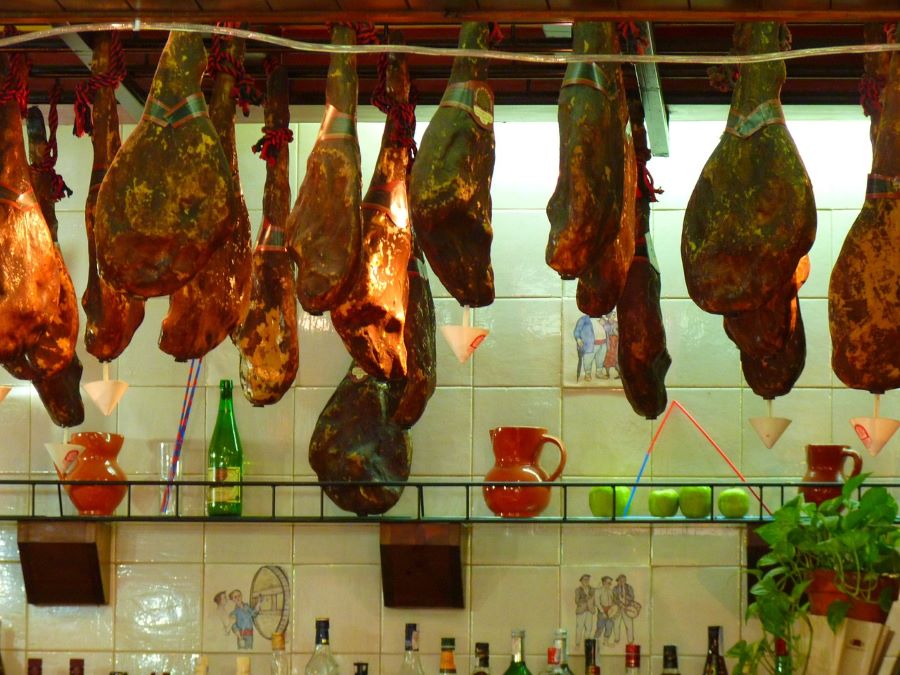
- Jamón Ibérico
Jamón Ibérico is one of the most iconic and cherished tapas in Spain, known for its rich, nutty flavor and melt-in-your-mouth texture. Made from black Iberian pigs, this cured ham is thinly sliced and usually served on its own or with a few pieces of crusty bread to let the flavor shine. What sets it apart is the acorn-based diet of the pigs and the long curing process, which can last up to four years. It’s often enjoyed at room temperature, allowing the natural fats to soften and release their deep, savory aroma. In many tapas bars, a plate of Jamón Ibérico is a simple but standout offering that reflects the quality of Spain’s artisanal food traditions.
- Cured Iberian ham, thinly sliced and often served on its own or with bread.
Here’s a video on how the famous Jamon Iberico is made from the amazing pigs that feast on the land
- Patatas Bravas
Patatas Bravas is a classic Spanish tapa that’s both comforting and full of flavor. It features crispy fried potato cubes typically served with a mildly spicy tomato-based sauce, and sometimes a drizzle of aioli for a creamy contrast. The sauce can vary depending on the region—some versions are smoky, others more tangy or garlicky—but the dish remains a go-to favorite across Spain. Simple yet satisfying, Patatas Bravas is a popular starter in tapas bars and a great way to ease into a casual, shared meal. It’s often one of the first dishes to hit the table and disappears just as quickly.
-
- Fried potato cubes with a mildly spicy tomato sauce and sometimes aioli.
Here’s an authentic patatas bravas recipe guide below to make your own
- Tortilla Española
Tortilla Española, or Spanish omelet, is a staple tapa found in nearly every corner of Spain. Made with just a few ingredients—eggs, potatoes, and often onions—it’s a humble but hearty dish that’s served in wedges, warm or at room temperature. The texture is soft and tender inside, with a slight golden crust on the outside. Each region and even each cook might put their own spin on it, but the essence remains the same: comforting, filling, and versatile. It’s commonly enjoyed with a piece of bread or a light salad, making it a satisfying tapa that works well at any time of day.
-
- Thick Spanish omelet made with eggs, potatoes, and sometimes onions.
Here’s a quick way to make Torilla Espanola or Spanish Omelet below
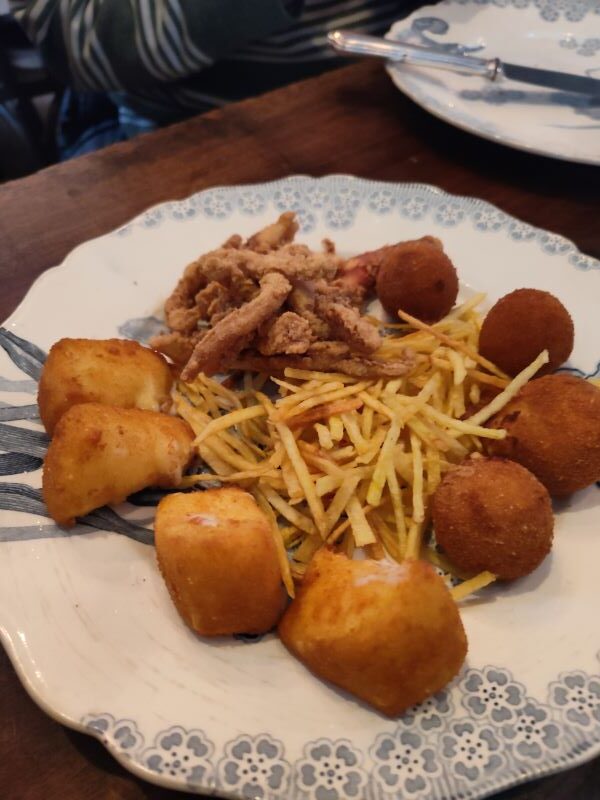
- Croquetas
Croquetas are a beloved tapa in Spain, offering a crispy bite on the outside and a creamy, flavorful filling inside. These small, breaded fritters are typically made with a thick béchamel sauce mixed with ingredients like jamón, chicken, cod, or mushrooms. Once shaped and coated in breadcrumbs, they’re fried until golden brown. Each region has its own version, and many families have their own recipes passed down through generations. Croquetas are usually served hot and make for a comforting, indulgent snack that pairs perfectly with a glass of wine or beer. Despite their simple appearance, they’re a true test of skill in Spanish home cooking.
-
- Fried béchamel-based croquettes filled with ham, chicken, or cod.
Here’s an easy recipe to make Croquetas from any type of leftover below
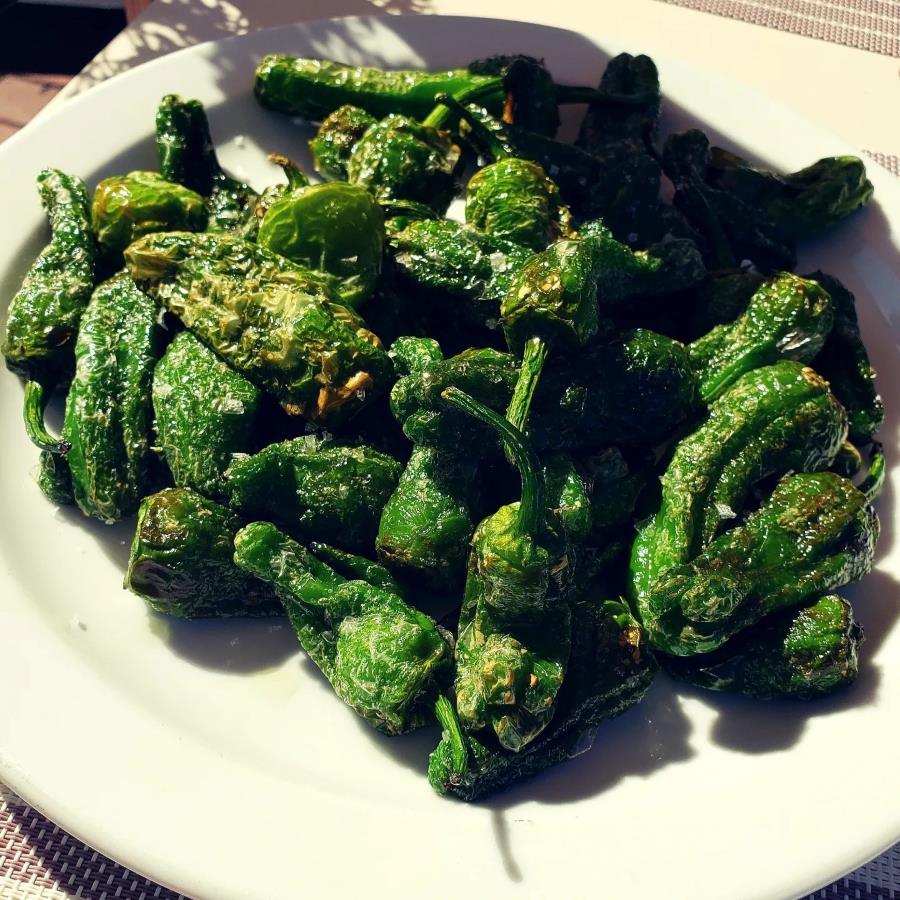
- Pimientos de Padrón
Pimientos de Padrón are a simple but addictive tapa made from small green peppers, typically flash-fried in olive oil and sprinkled with coarse sea salt. Originating from the town of Padrón in Galicia, most of these peppers are mild, but every now and then you’ll bite into one with a surprising kick—part of the fun that comes with ordering them. Served hot and blistered, they make a great starter or side dish that pairs well with other tapas. Their smoky, slightly bitter flavor and the occasional spicy surprise have earned them a spot on nearly every tapas bar menu across Spain.
- Small green peppers, flash-fried and sprinkled with sea salt; some are spicy.
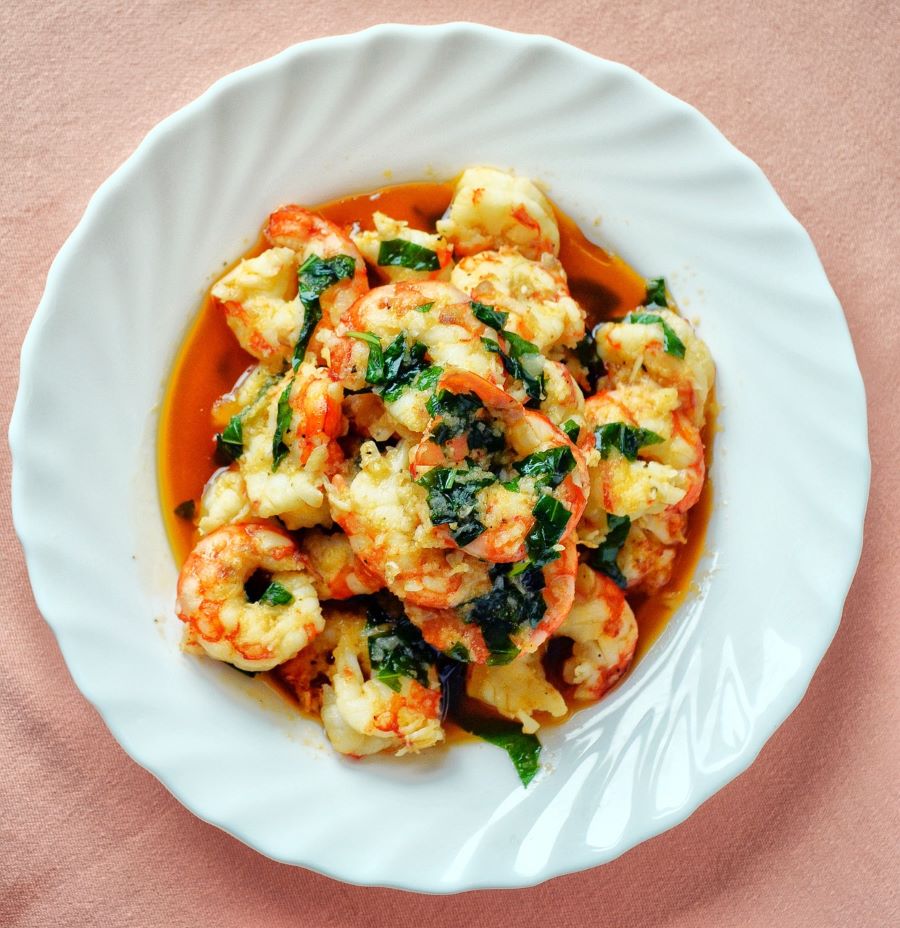
- Gambas al Ajillo
Gambas al Ajillo is a flavorful and aromatic tapa featuring shrimp sautéed in olive oil with plenty of sliced garlic and a touch of chili. Often served still sizzling in a small clay dish, the shrimp are tender and infused with the bold flavors of the garlicky oil. Some versions include a splash of dry sherry or a bit of paprika for extra depth. Typically enjoyed with crusty bread to soak up the infused oil, this dish is both simple and packed with flavor. It’s a staple in tapas bars across Spain, especially in coastal regions where fresh seafood is part of daily life.
-
- Shrimp sautéed in garlic and olive oil, often with a bit of chili.
Here’s a fantastic and easy shrimp and garlic dish you can make easily below
- Boquerones en Vinagre
Boquerones en vinagre is a quintessential Spanish tapa that showcases the elegant simplicity of Iberian cuisine. These fresh anchovies are gently cured in white wine vinegar, which “cooks” the delicate fish through acidification while preserving their tender, almost silky texture. The anchovies are typically filleted and marinated with garlic, olive oil, and parsley, creating a bright, tangy flavor that perfectly balances the fish’s natural brininess. Served chilled on small plates or atop crusty bread, boquerones offer a refreshing contrast to heavier tapas and pair beautifully with crisp white wines or cold beer. This beloved appetizer represents the Spanish mastery of preserving seafood while celebrating the pure, unadulterated flavors of the Mediterranean coast.
-
- White anchovies marinated in vinegar, olive oil, and garlic.
Here’s an easy video recipe to follow below of making Boquerones en vinagre
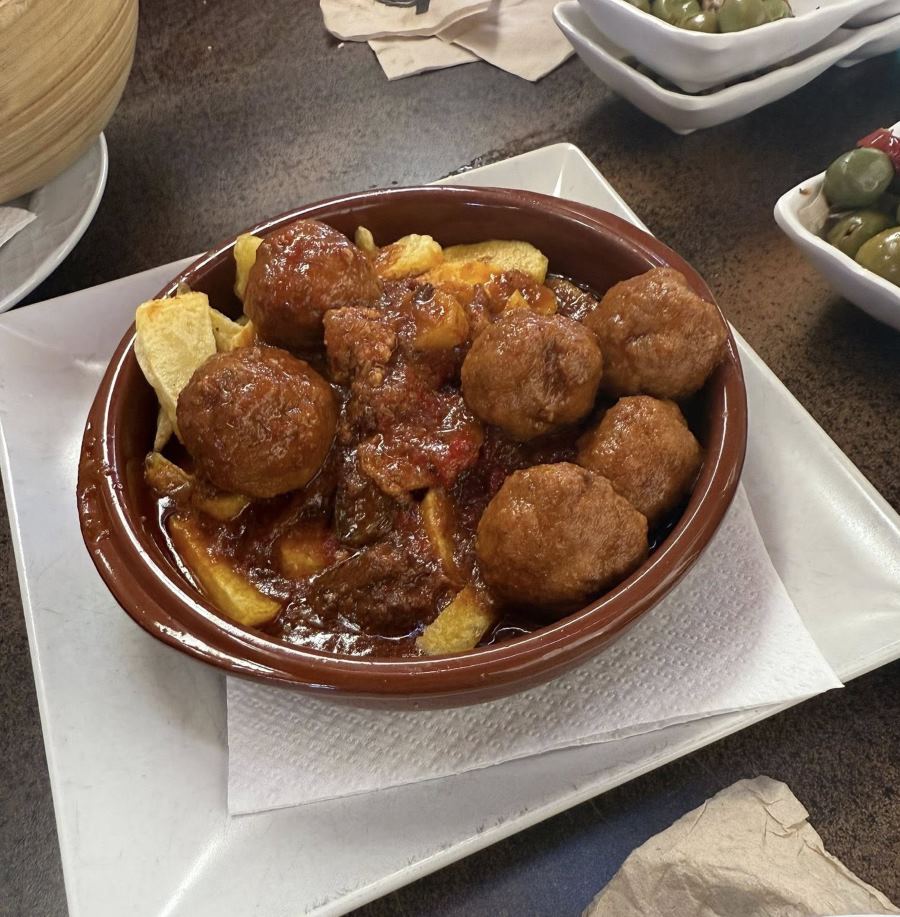
- Albondigas
Albóndigas are beloved Spanish meatballs that hold a cherished place in the country’s culinary tradition, appearing both as comforting home-cooked meals and popular tapas. These tender, well-seasoned spheres are typically made from a mixture of ground beef and pork, combined with breadcrumbs, eggs, garlic, and parsley, then gently simmered in a rich tomato-based sauce that often includes onions, wine, and aromatic herbs. Regional variations abound across Spain, from the Andalusian version served in a saffron-tinged almond sauce to Basque-style albóndigas cooked in a savory green sauce with peas and hard-boiled eggs. Whether served as a substantial main course with crusty bread or offered as a tapa alongside other small plates, albóndigas represent the essence of Spanish comfort food, bringing families together around the table with their hearty, soul-warming appeal that has been passed down through generations.
-
- Spanish-style meatballs, usually served in a tomato or almond sauce.
- Pan con Tomate
Pan con tomate is perhaps the most iconic and beloved tapa in Catalonia, representing the pure essence of Mediterranean simplicity and flavor. This deceptively simple dish consists of toasted bread rubbed with the cut side of a ripe tomato, allowing the fruit’s juices and pulp to soak into the crispy surface, then drizzled with good quality olive oil and sprinkled with coarse sea salt. The key to perfect pan con tomate lies in using day-old bread that becomes beautifully crispy when toasted, perfectly ripe tomatoes that release their sweet juices easily, and fruity extra virgin olive oil that binds all the flavors together. Often served as a foundation for other ingredients like jamón ibérico, anchovies, or cheese, this Catalan staple transforms the humblest ingredients into something extraordinary, embodying the Spanish philosophy that the best cuisine celebrates the natural flavors of quality produce rather than masking them with complex preparations.
-
- Rustic bread rubbed with ripe tomato, olive oil, and a pinch of salt.
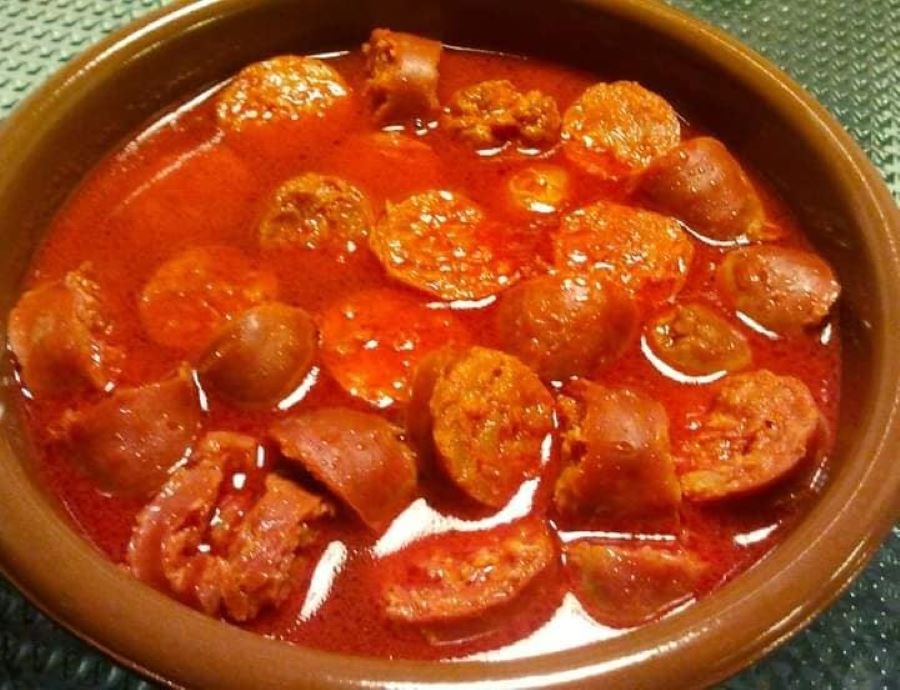
- Chorizo a la Sidra
Chorizo a la sidra is a rustic and flavorful tapa that hails from Spain’s northern regions, particularly Asturias, where apple cider is deeply woven into the culinary culture. This hearty dish features slices of spicy chorizo sausage slowly simmered in dry Spanish cider, which tenderizes the meat while creating a rich, slightly sweet sauce that balances the chorizo’s smoky paprika heat. As the cider reduces during cooking, it concentrates into a glossy, amber-colored glaze that coats each piece of sausage, while the alcohol mellows to leave behind a subtle fruity complexity. Traditionally served bubbling hot in small earthenware dishes called cazuelitas, chorizo a la sidra is often accompanied by crusty bread perfect for soaking up the delicious sauce, making it an ideal tapa for sharing among friends over glasses of the same cider used in its preparation. This dish perfectly captures the warming, convivial spirit of Spanish tavern culture.
-
- Spicy Spanish sausage cooked in cider, common in northern Spain.
Here’s a quick and simple way to prepare this Choizo a la Sidra in this video below
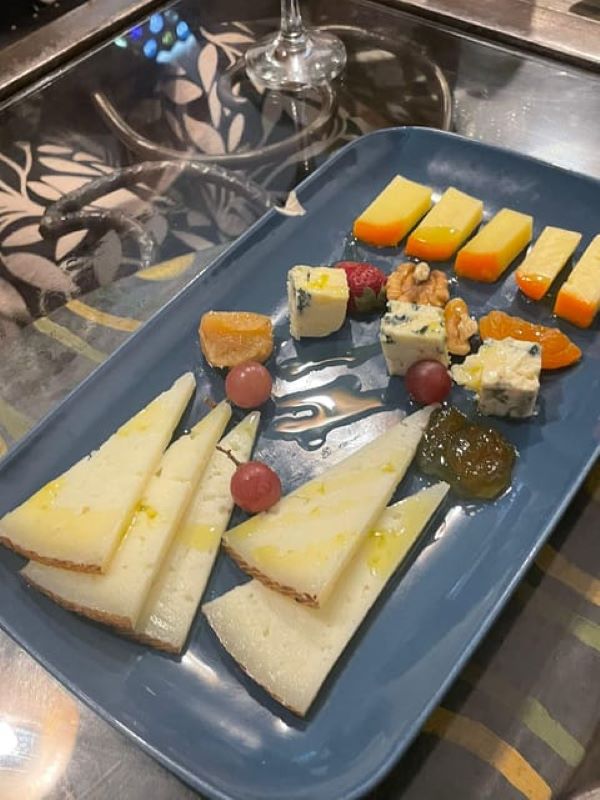
- Queso Manchego
Queso Manchego is Spain’s most celebrated cheese and a cornerstone of any proper tapas spread, representing centuries of artisanal cheesemaking tradition from the windswept plains of La Mancha. This firm, aged sheep’s milk cheese boasts a distinctive herringbone pattern on its rind from the traditional esparto grass molds, while its pale yellow interior offers a complex flavor profile that ranges from mild and buttery in younger wheels to sharp, nutty, and slightly piquant in well-aged varieties. When served as a tapa, Manchego is typically cut into neat wedges or cubes and paired with complementary elements like quince paste (membrillo), Marcona almonds, or drizzled with honey, creating a perfect balance of salty, sweet, and nutty flavors. The cheese’s firm yet creamy texture and rich, lingering finish make it an ideal companion to Spanish wines, particularly Tempranillo or sherry, while its versatility allows it to stand alone as a simple yet sophisticated tapa that showcases the pure essence of Spanish terroir.
-
- Aged sheep’s milk cheese from La Mancha, often paired with jam or olives.
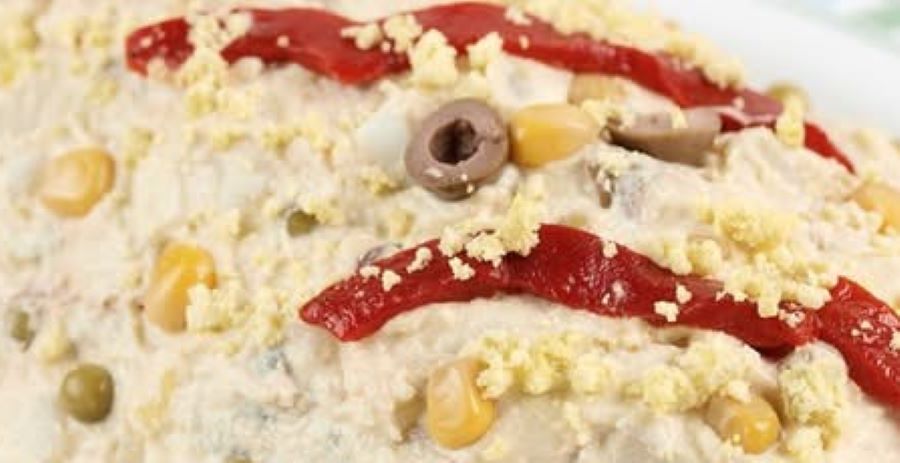
- Ensaladilla Rusa
Ensaladilla rusa, despite its name suggesting Russian origins, is a quintessentially Spanish tapa that has become a beloved staple in bars and homes across the country. This creamy potato salad features diced boiled potatoes mixed with hard-boiled eggs, carrots, peas, and sometimes tuna or other seafood, all bound together with generous amounts of mayonnaise that creates its characteristic rich, velvety texture. The dish is typically garnished with additional hard-boiled egg slices, olives, or red pepper strips, and is served chilled as a refreshing counterpoint to Spain’s warm climate and more intensely flavored tapas. Each region and even individual establishments often have their own variations, with some adding pickles, roasted red peppers, or different proteins, making ensaladilla rusa a canvas for culinary creativity while maintaining its essential comfort food appeal. This hearty, satisfying tapa represents the Spanish ability to adopt and transform international influences into something uniquely their own, creating a dish that feels both familiar and distinctly Iberian.
-
- Creamy potato salad with peas, carrots, tuna, and mayo—served chilled.
Here’s a simple potato/mayo salad to make on your own below
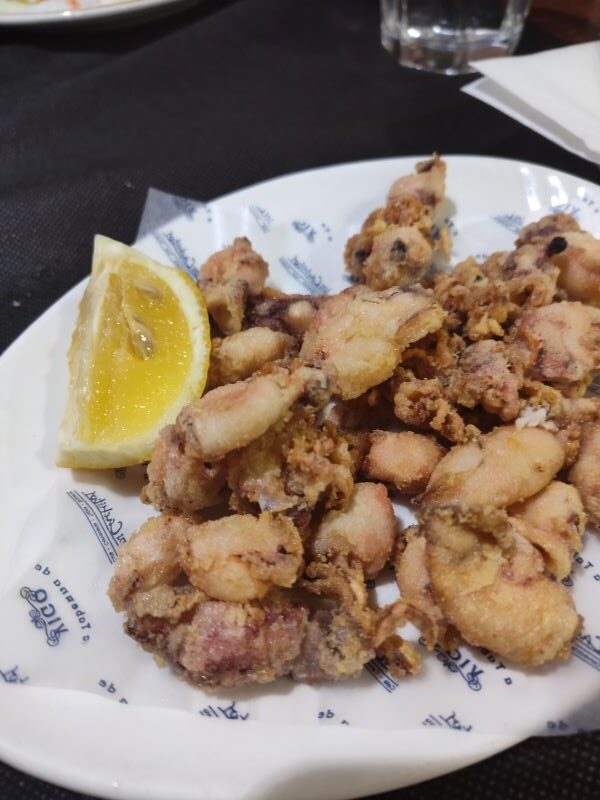
- Calamares a la Romana
Calamares a la Romana is one of Spain’s most iconic and universally beloved tapas, consisting of tender squid rings coated in a light, crispy batter and fried to golden perfection. This seemingly simple dish requires skillful technique to achieve the ideal balance between a delicate, airy coating that shatters at first bite and squid that remains tender and sweet rather than rubbery. The squid is typically cut into rings, lightly dusted with flour, dipped in a beer or sparkling water batter that creates maximum crispiness, then quickly fried in hot oil until the exterior becomes beautifully golden while the interior stays succulent. Served immediately while still crackling hot, calamares a la romana are traditionally accompanied by a wedge of lemon for brightness and often paired with alioli or a simple tomato sauce for dipping. This quintessential Spanish tapa represents the country’s mastery of seafood preparation, transforming humble squid into an irresistible crowd-pleaser that epitomizes the convivial spirit of Spanish bar culture.
-
- Fried squid rings, lightly battered and served with lemon.
If you want to try making it on your own, check out this entertaining video post on making Calamares a la Romana below
Further reading
Check out these other topics of Spanish culture, lifestyle and food below
Visit the Unesco sites of Spain
Specialty foods and markets in Cadiz Spain
Specialty foods and markets of Valencia

About author – Noel Morata
After relocating from the United States to Andalusia in 2020, I’ve made it my mission to discover every corner of Spain. Based just east of Granada, I’ve spent over 12 months exploring Malaga province and the rest of Spain, including multiple extended visits to Torremolinos throughout different seasons. My background in Spanish cultural studies and years of residence and exploring all of Spain have given me unique insight into the region’s historical significance, local customs, and culinary traditions.
I regularly update my guides with the latest information gathered through personal visits and relationships with local tourism officials, always seeking what’s new and exciting in each destination. As a self-proclaimed foodie, I’m passionate about discovering authentic local markets and regional specialties.
I love Tapa culture and specialty foods of Spain and try to highlight them regularly on this site. Hope that you found this post helpful and please do share them on your Social Media below.

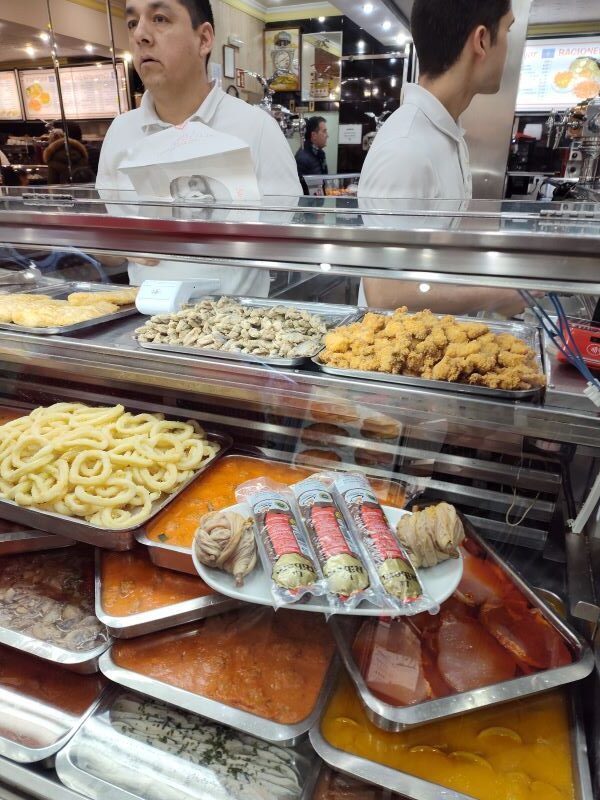
1 thought on “What are Tapas”